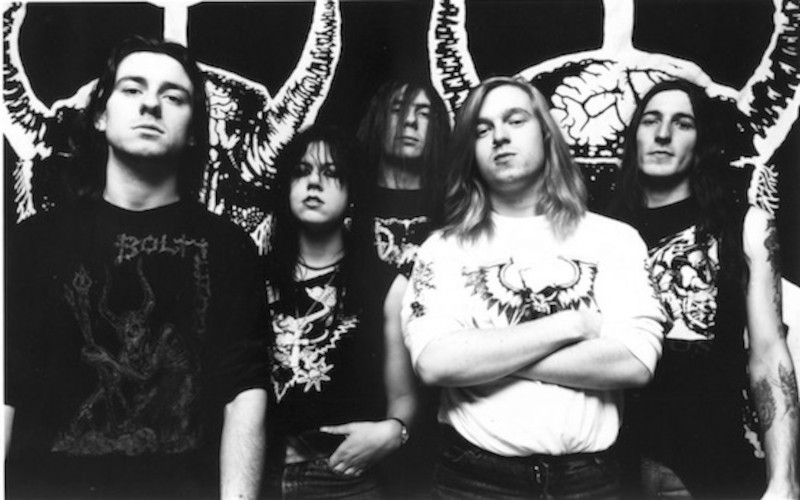In the gritty crucible of 1980s Britain, a time marked by political tension, economic strife, and a vibrant underground music scene, Bolt Thrower emerged as a thunderous voice of war, rebellion, and sonic power. Formed in Coventry, England in 1986, Bolt Thrower quickly carved a niche within the burgeoning death metal movement. Known for their relentless sound, militant imagery, and uncompromising vision, the band’s early years laid the groundwork for their cult legacy. Bolt Thower were a fave of mine when growing up, especially around the “War Master” and “IV Crusade” era’s and one of the most consistenly “Metal” bands out there, Never putting out wimpy albums or straying too far from their tried and tested style.
Formation and Influences
Bolt Thrower was founded by guitarist Barry Thomson and bassist Gavin Ward in 1986. Initially inspired by punk bands like Discharge and Crass, as well as metal pioneers such as Slayer, Venom, and Celtic Frost, the band blended political fury with heavy, aggressive music. The band had initially been quite involved in the punk scene of the time in the UK but it wasn’t long before their sound became a quite pure form of Death Metal.<\ /p>
Their name was taken from a weapon in the Warhammer Fantasy Battle universe, foreshadowing a long-standing connection between their lyrical themes and fantasy warfare.
Early Demos and Underground Buzz
In 1987, Bolt Thrower released their first demo, In Battle There Is No Law, a raw burst of grindcore-infused metal that quickly gained traction in the tape-trading community. This was followed by Concession of Pain, which further refined their sound.
Vocalist Karl Willetts replaced Alan West shortly after, and Willetts would go on to become one of the defining voices of the British death metal scene. I always found Karl to have a great voice, quite distinguisable (as far as death metal goes) and instantly identifiable.
John Peel Session and First Album
A major breakthrough came in 1988 when the band recorded a session for the legendary John Peel on BBC Radio 1. This exposure helped Bolt Thrower reach new audiences outside the underground scene.
That same year, they released their debut album In Battle There Is No Law! through Vinyl Solution. While the album’s production was raw, it was a bold and uncompromising introduction to Bolt Thrower’s evolving style.
Signing with Earache Records
Unsatisfied with Vinyl Solution, Bolt Thrower soon signed with the influential indie label Earache Records in 1989. Earache was home to other key extreme metal acts like Napalm Death and Carcass, providing a supportive environment for the band to grow.
Realm of Chaos and the Warhammer Connection
Bolt Thrower’s second album, Realm of Chaos: Slaves to Darkness (1989), marked a significant evolution. The band collaborated with Games Workshop to align the album’s artwork and themes with the dystopian sci-fi world of Warhammer 40,000.
The result was a heavier, more structured death metal sound. Songs like “World Eater” and “Through the Eye of Terror” became fan favorites and defined Bolt Thrower’s place in the death metal pantheon.
Establishing Their Signature Sound
By the end of the 1980s, Bolt Thrower had forged a sound that emphasized crushing mid-tempo riffs, war-themed lyrics, and an unmistakable sense of atmosphere. Unlike many of their peers, they favored grinding heaviness over speed or technicality.
This approach would become a signature style and influence countless death metal and doom metal bands in the decades to follow.
Conclusion: Foundations of a Death Metal Legacy
From their formation in Coventry to the release of their landmark album Realm of Chaos, Bolt Thrower’s early years (1986–1990) were a period of intense growth, experimentation, and artistic identity. Their music reflected not only the brutality of war but also the gritty resilience of underground British metal.
These formative years laid the foundation for a career defined by consistency, loyalty to their fans, and a legacy as one of the most respected bands in the history of extreme metal.
